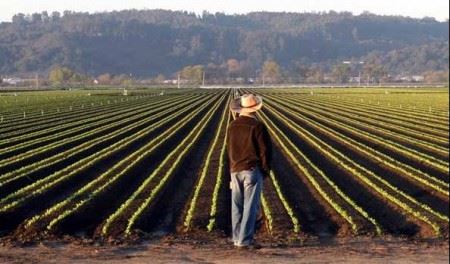California is widely celebrated for its diverse agriculture – from grapes fueling the wine industry to almonds, avocados, and a myriad of fruits and vegetables.
However, one burgeoning sector often flies under the radar: olive oil production. While olives and olive oil have long been staples in Mediterranean countries, California’s olive industry is rapidly growing, bringing with it significant economic implications, especially for the state’s rural communities. As these areas grapple with the challenges of economic sustainability, population decline and limited job opportunities, the olive oil industry is emerging as a bright spot with the potential to revitalize rural economies across the Golden State.
The Need for Economic Development in Rural California
California’s rural towns and regions face persistent economic challenges that threaten their viability.
According to the Public Policy Institute of California, many rural counties lost between 2% and 10% of their population over the last decade due to outmigration, particularly of younger residents seeking education and employment opportunities elsewhere. This “brain drain” drains rural areas of both talent and economic activity, creating a vicious cycle of decline.
Many rural communities depend heavily on a few agricultural crops or industries, leaving them vulnerable to market fluctuations, climate events, or regulatory changes. For example, regions reliant on almonds or cotton have felt the sting of water shortages and price volatility. Infrastructure gaps – ranging from broadband internet access to healthcare facilities – further compound economic struggles. The California Economic Summit has repeatedly highlighted these challenges, calling for targeted economic development to revitalize rural regions.
Against this backdrop, olive growing and olive oil production present an exciting and viable pathway for economic development. The industry offers new jobs, diversified incomes for farmers and opportunities to build local value chains, all of which can help stabilize and rejuvenate rural economies.
A Growing Industry Rooted in Tradition and Innovation
Olive cultivation in California is not entirely new – the first olive trees were planted by Spanish missionaries in the 18th century. Yet, it’s only in recent decades that olive oil production has blossomed into a serious agricultural business. According to the California Olive Oil Council, California produces over 90% of all U.S.-grown olives and olive oil, with the industry currently valued at over $30 million annually and growing at an estimated rate of 5-7% per year. The consumer market exists for California Olive Oil to grow at a much higher annual rate.
Driving this growth is not just the favorable Mediterranean-like climate in the state but also the increasing demand for high-quality, locally produced olive oil. Consumers are increasingly seeking premium, extra-virgin olive oil that is fresh, traceable, and sustainably produced, which are qualities California growers have worked hard to deliver.
The rise of the California olive oil industry is a beacon of hope for many rural areas. Unlike some traditional crops, olives are relatively resilient to drought and can be grown sustainably with proper management. For instance, olive trees require roughly 50% less water than almonds, one of California’s other major crops, making them a more drought-resilient option for water-scarce regions.
These factors have made olives an attractive option for farmers seeking to diversify their operations and reduce risks. By embracing both traditional farming methods and modern technology, California’s olive growers are creating a product that competes with global brands and appeals to health-conscious consumers who want locally sourced foods.

Job Creation and Economic Diversification
One of the most immediate and tangible benefits olive oil production brings to rural California is job creation. Unlike highly mechanized crops, olives require labor at several stages – from planting and pruning to harvesting and milling.
Harvesting olives is often done by hand or with specialized machines that still require skilled operators, creating seasonal employment opportunities. The UC Davis Olive Center estimates that olive production supports approximately 3,000 to 5,000 jobs across rural California, including seasonal harvest labor and processing plant workers. More rapid growth could create many more jobs in the industry.
This labor demand helps reduce unemployment rates in rural counties, where job opportunities are often limited. For example, in Tehama County, a rural area with an unemployment rate above the state average, the recent expansion of olive groves and processing facilities has created hundreds of seasonal and full-time jobs, providing a critical boost to the local economy.
More importantly, olive oil production fosters economic diversification in rural economies. Many communities are overly dependent on a handful of crops or industries, making them vulnerable to economic shocks.
When farmers add olives to their portfolio, they spread their risks. For example, if a walnut or citrus harvest suffers due to pests or drought, olive groves may still produce profitable yields. This diversification helps farmers maintain more stable incomes and keeps money circulating in local economies.
Beyond farming itself, olive oil production supports ancillary industries such as processing facilities, bottling plants, packaging companies and logistics providers. Many of these businesses are locally based, meaning the economic benefits ripple through the community. When local growers sell olives to California-based mills, and those mills hire workers or contract with local suppliers, the money stays in the community instead of flowing out to distant corporations.
Local growers can also create their own olive oil brands and sell them in grocery stores and to restaurants. This vertical integration can allow growers to retain a greater percentage of their profits.
Revitalizing Infrastructure and Community Life
Economic activity generated by the olive oil sector enables investments in rural infrastructure and community life, improving quality of life and making these areas more attractive to residents and businesses. Increased tax revenues from thriving farms and related enterprises fund better roads, schools, public safety and healthcare services. In rural California, where infrastructure often lags behind urban centers, this injection of capital is critical.
Additionally, olive oil production helps revitalize community identity and pride. Small towns hosting olive festivals, farm tours and tasting events not only celebrate their agricultural heritage but also attract visitors and new residents.
Agritourism tied to olive oil production stimulates additional spending in local restaurants, hotels and shops. For instance, the annual California Olive Oil Festival in Oroville CA draws over 15,000 visitors annually and contributes more than $1 million in local spending, providing a substantial economic boost.
These cultural and economic benefits counteract rural depopulation trends, encouraging young people to stay or return and giving newcomers a reason to settle.
Overcoming Challenges: Water, Capital and Sustainability
While the economic potential is significant, challenges remain. Olive farming requires a considerable upfront investment – planting a new grove that may take 5 to 7 years before reaching full production and profitability demands capital many farmers struggle to access. This barrier is especially tough in economically distressed rural areas, where credit and grants can be scarce.
Water scarcity is another pressing issue. Although olive trees are more drought-tolerant than many crops, they still require water, particularly during the early years of growth. California’s ongoing droughts and water restrictions pose real risks to growers and, by extension, to rural economies reliant on their success.
Furthermore, sustainable farming practices are vital to ensure that olive production does not degrade soil health or ecosystems over time. Responsible pesticide use, soil conservation and water management are essential to preserve the land that rural communities depend on for future generations.
The Importance of Policy and Support
Public policy and support programs are crucial to unlocking the full economic benefits of olive oil production for rural California. Financial incentives, grants and low-interest loans can help farmers overcome the initial capital hurdles. Programs such as the California Department of Food and Agriculture’s Specialty Crop Block Grant Program have already supported olive oil research and grower education.
Technical assistance programs provide expertise in sustainable farming and modern production techniques, helping growers maximize yields and quality. State and local governments also play a role in investing in rural infrastructure – broadband internet, transportation, education, and healthcare – that makes farming viable and attracts other economic activities.
Marketing initiatives that promote California olive oil as a premium local product help growers gain better prices and access new markets, further boosting rural incomes. The California Olive Oil Council’s efforts to educate consumers about the quality and origin of California olive oil have helped build strong brand recognition nationally and internationally.
Private investment is also another viable alternative. Olive oil sales in the U.S. are booming and private investors and venture capital firms are increasingly interested in good agriculture and food-oriented ventures.
Cultivating a Sustainable Future for Rural Communities
California’s olive oil industry, which is still in its infancy and has much room to grow, is more than an agricultural success story – it is a critical opportunity for economic development in rural communities across the state. By creating jobs, diversifying rural economies, revitalizing infrastructure and fostering community pride, olive growing and olive oil production offer a pathway to sustainable prosperity.
Yet, realizing this potential requires a coordinated effort from farmers, policymakers, investors and community leaders. Addressing water scarcity, supporting new growers with capital and education, and promoting environmentally sustainable practices will be key to ensuring the industry’s longevity.
For many rural towns and regions facing economic decline, the olive oil industry represents hope and resilience – a chance to cultivate not just olives, but a renewed future. Supporting and growing this sector means investing in the economic health and cultural vibrancy of California’s rural heartland, benefiting not only those who live there but the entire state. It’s also good business because consumer demand for olive oil continues to grow domestically and globally.







